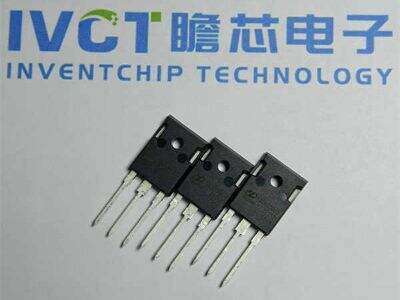The selection of the semiconductor material for these power devices is of the utmost importance for their effective and efficient operation. Semiconductors are a group of materials that can function as conductors under certain circumstances. Silicon has been fortunate to have a variety of good attributes for application in power devices. However, there are other types of semiconductors with special attributes that deserve consideration. This article discusses the most important differences between silicon and other semiconductors, so you can choose the appropriate material for your power devices.
Silicon Power Devices and Their Advantages
Silicon has been the most popular material for power devices for many years due to the fact that it is easily found and not too costly. Despite the high voltages and temperatures it can tolerate, it remains a very rigid and reliable material, which is great in many applications. These qualities make silicon well-liked in electronics such as computers and smartphones. Silicon is also very efficient with electricity, assisting smooth power movement with less power wasted in the form of heat. Overall silicon is a more trustworthy and cheaper solution for power devices which makes it a GoTo for engineers and manufacturers as well.
Key Aspects of Other Semiconductors for Power Applications
Silicon is the most widely used semiconductor, yet other semicondcutors that have some quite interesting characteristics may be very useful depending on use. Two such semiconductors that are increasingly used within the industry include gallium nitride (GaN) and silicon carbide (SiC). GaN is extremely quick to switch from its on to off mode and lose minimal power in doing this. This makes GaN highly suitable for high-speed usage. SiC is significantly different on the other hand and can handle higher voltage and temp than silicon and is therefore better designed for high-power applications like EVs and other heavy equipment.
Silicon Vs Other Semiconductors
Silicon vs other semiconductors like gaN, SiC. One of the most effective methods[[5] to reduce the energy loss (per switching cycle) is to select the type of operating semiconductor (silicon vs. other semiconductors like gaN, SiC). Silicon is a great, cost-effective alternative, but occasionally in specialized applications, it can be less effective or not operate as well as GaN or SiC. Gallium nitride (GaN) and silicon carbide (SiC) are very fast and able to lose less power, making them ideal for high-power and high-frequency devices. That indicates, in circumstances where speed and efficiency are as important as anything else, GaN or SiC could be the better solution.
Things to Keep in Mind When Choosing a Semiconductor
Following are some of the critical things to keep in mind when you are selecting silicon over other semiconductors in power devices. The cost is a significant factor, as silicon is generally less costly than pmos as switch GaN and SiC. In other applications where performance is more important, the cost of GaN and SiC could be well justified. You also need to consider what precisely your power device needs. Principal. knowledge that incorporates specifics like voltage, power ratings, heat control, and switching speeds. Consider these needs when selecting the appropriate semiconductor material to apply in your applications.
Silicon and Other Semiconductors
In short, silicon. is trusted, affordable, and commonly employed in numerous applications, hence the most popular material for power devices. Other semiconductors such as GaN and SiC possess unique characteristics that are useful for particular situations where high performance is needed. If you do need to compare silicon to other semiconductors, you should be aware of factors such as price, efficiency, yield, and the requirements of your particular application. Conclusion silicon vs other semiconductor materials In silicon vs other semiconductor materials, an in-depth exploration of the factors that will affect your material choice for your power devices will assist you in making the most informed decision and selecting the material that is best for you that will allow you to get the most out of what you desire in terms of performance.
 EN
EN
 AR
AR
 HR
HR
 DA
DA
 NL
NL
 FR
FR
 DE
DE
 EL
EL
 HI
HI
 IT
IT
 JA
JA
 KO
KO
 NO
NO
 PL
PL
 PT
PT
 RO
RO
 RU
RU
 ES
ES
 SV
SV
 TL
TL
 IW
IW
 ID
ID
 LT
LT
 SR
SR
 SK
SK
 UK
UK
 VI
VI
 SQ
SQ
 HU
HU
 TH
TH
 TR
TR
 FA
FA
 AF
AF
 MS
MS
 HY
HY
 BN
BN
 LA
LA
 TA
TA
 TE
TE
 MY
MY

